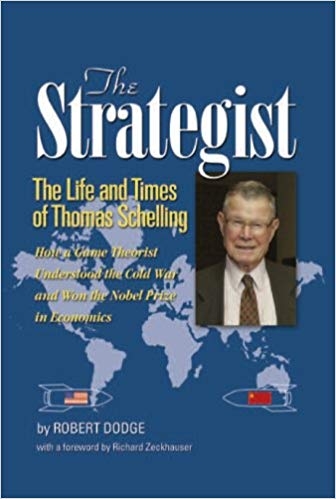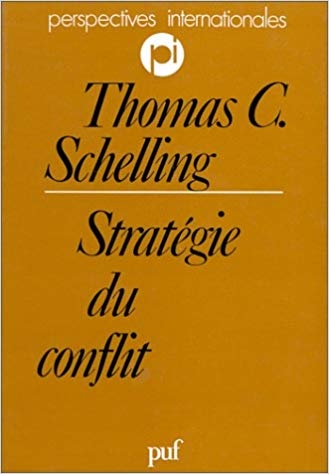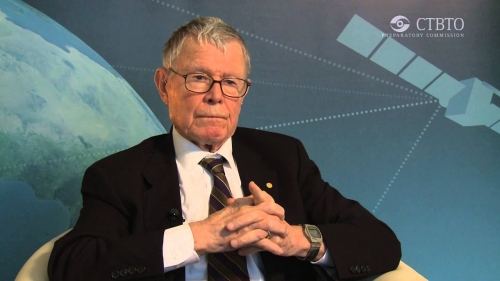A month ago I was asked to introduce who I thought of as the most important 20th and 21st century strategic thinker. Answering that question has not been simple, however, I liked my answer and I was proud of it so I decided to write and share it.
The question “who is the most important 20th and 21st century strategic thinker” is a very interesting and complex one that needs a very articulate answer. When I started to think about the answer I realized how rich has been the 20th century in terms of strategic thinker, ideas, and innovations.
My first idea was to opt for one of the several authors who wrote about irregular warfare, insurgency, and guerilla warfare. Lawrence of Arabia, Mao Tse Tung, or one thinker related to the debate on counterinsurgency such as Roger Trinquier or David Galula because all of them have an enduring legacy today in the debate on modern COIN. Then I thought of Liddell Hart and his indirect approach because he stressed both the psychological element of conflict and the fact that in strategy, the longest way round is often the shortest way home.
 A third idea was to speak about the air power, mentioning authors such as Giulio Duhet, William Mitchell or John Boyd, because surely the air power was one of the most relevant strategic and military innovations in the 20th century with a huge impact on war and warfare. Then, I was thinking of Bernard Brodie because he was an initial architect of nuclear deterrence strategy, tried to find out the role and value of nuclear weapons and was one of the first strategic thinker to recognize the role and impact of missile.
A third idea was to speak about the air power, mentioning authors such as Giulio Duhet, William Mitchell or John Boyd, because surely the air power was one of the most relevant strategic and military innovations in the 20th century with a huge impact on war and warfare. Then, I was thinking of Bernard Brodie because he was an initial architect of nuclear deterrence strategy, tried to find out the role and value of nuclear weapons and was one of the first strategic thinker to recognize the role and impact of missile.
However, I decided in favour of Thomas Schelling for several reasons. First of all, in contrast to the aforementioned thinkers, he was one of the best academic of his time in fact he was also awarded the 2005 Nobel Prize in Economic Sciences. Even though his works on strategy, conflicts, diplomacy were focused on nuclear strategy and tailored for the cold war, they are timeless.
Schelling broadened the concept of military strategy from the science of military victory to the art of coercion, of intimidation and deterrence. To be coercive or deter another state, violence must be anticipated and avoidable by accommodation. He delved into the notion of conflict not limiting its meaning to the defeat of your opponent. Instead, one must seize opportunities to cooperate. Because only in the rare occasion of a “pure conflict”, are the interests of participants relentlessly opposed. However, cooperation may take many forms, and thus could potentially involve everything from deterrence, limited war, and disarmament to negotiation.
Schelling’s ideas on deterrence, conflicts, and strategy were not only original, but they were, and still are, also crucial to better understand the complexity of war itself. For instance, he did not expect escalation to develop as a result of deliberate steps taken by calculating governments fully aware of the consequences of their actions. On the contrary, “Violence, especially in war, is a confused and uncertain activity, highly unpredictable depending on decisions taken by fallible human beings organized into imperfect governments depending on fallible communications and warning systems and on the untested performance of people and equipment”.
Consequently, Schelling was able to think in a very scientific and systematic way, but he never lost contact with the reality of war. In this aspect he shared a common view with Clausewitz on the nature of war in which human dimension, chance, friction and fog of war play a crucial role and have an unavoidable impact on war, military operations and victory.
 Another Schelling’s central idea is that an interplay of motives between adversaries exists and so he stressed the role of communication, understandings, compromise, and restraint. Communication between opponents can take two forms: verbal or written communication is known as “explicit”; action-based communication and involves the use of violence to indicate to an adversary that the costs of not agreeing to an opponent’s political demands will outweigh the costs of concession.
Another Schelling’s central idea is that an interplay of motives between adversaries exists and so he stressed the role of communication, understandings, compromise, and restraint. Communication between opponents can take two forms: verbal or written communication is known as “explicit”; action-based communication and involves the use of violence to indicate to an adversary that the costs of not agreeing to an opponent’s political demands will outweigh the costs of concession.
With this ideas, Schelling underlined that war is a reactive environment. Clausewitz explained: “War is not the action of a living force upon a lifeless mass but always a collision of two living forces”. Moreover, Clausewitz described war as a duel and as an interplay of two different wills. Clausewitz and Schelling also share the core idea of escalation because it was the Prussian General who conceptualized war as tending towards absolutes in the framing of the distinction between absolute and limited war. Furthermore, Schelling was aware that, with enough military force, a country may not need to bargain because it can reach its goal using the sole military force because the adversary is too weak to stand. The problem here lies in what enough means, because it depends on the interplay between actors. Enough could be one armoured division against one adversary, but against another adversary an entire nuclear arsenal could not be enough.
Therefore, Schelling was able to link his strategic theory with the historical evolution of military strategy, but also to innovate and broaden it. In his strategic thinking it was always clear the role of politics, as in Clausewitz, so the idea that conflicts are not something else from politics but that they are correlated.
However, the importance of Schelling’s ideas is not limited to those aforementioned, because his idea on deterrence, bargain, on use of coercion and coercive force are now used to explain terrorism and irregular conflicts. This makes Schelling a central strategic thinker even in the new security environment of 21st century.
For example, Neumann and Smith in The Strategy of Terrorism use Schelling’s ideas to describe terrorism and how it works from a strategic point of view. In particular, Schelling thinking on the possibilities of waging “limited war” in the nuclear age facilitates a deeper understanding into the persuasive intentions that govern the rationale behind most forms of terrorism. Schelling drew a distinction between the passive forms of terrorism implied in theories of deterrence, from compellence, by which he meant inducing a person to do something through fear, anxiety and doubt. Without doubt, terrorism is a strategy of compellence. It is aimed at persuading the target to do something in your favour. Moreover, they argue that the credibility of the terrorism’s threat relies on the ability and willingness to escalate. However, the ability to escalate into the extreme is bound by limited resources on the part of the terrorists. The only logical extension of the struggle is to extend the level of indiscrimination.
A second example on how Schelling is central in the 21st century strategic thinking is the concept of “grey zone warfare” that is a relatively new strategic notion that describes sequences of gradual steps used by revisionist powers to secure strategic leverage. Tools of this strategy are unconventional techniques—from cyberattacks to information campaigns to energy diplomacy. They maneuver in the ambiguous no-man’s-land between peace and war. This is clearly a gradualist strategy closely analogous to the “salami-slicing” strategy discussed in Thomas Schelling’s classic work, Arms and Influence. https://www.amazon.it/Arms-Influence-Thomas-C-Schelling/dp/0300143370 Aggressors can thus use “tactics of erosion,” testing the seriousness of a commitment, pretending the violation was unauthorized if one meets resistance. If the defender fails to respond resolutely, the aggressor has set a precedent, and then moves rapidly on to the next step in the series. The point of such tactics, in Schelling’s model, is very specific: to degrade the credibility of the defender’s deterrent threats. These strategic ideas related to the grey zone warfare are relevant in order to study the strategy and foreign policy of important Westerner competitors such as Russia, China and Iran.
In sum, Schelling developed his strategic thinking during the Cold War and focusing on nuclear weapons and strategy, but at the same time he was able to link his ideas to the broad strategic history remaining valid till today.





 del.icio.us
del.icio.us
 Digg
Digg